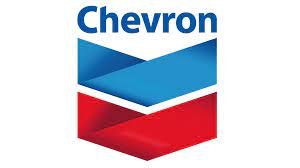$OII $HAL $SUBCY
#Subsea #EnergyServices #OffshoreOil #Partnerships #ROV #NorwegianTech #EnergyInvesting #GlobalMarkets #Innovation #OilAndGas #RenewableEnergy #MaritimeTech
Subsea resourcing specialist DRIFT Offshore and Norwegian remotely operated vehicles (ROV) company Kystdesign have announced a strategic partnership aimed at enhancing their respective service offerings. This collaboration is expected to position both firms as stronger contenders within the competitive subsea energy and offshore services markets. The partnership, leveraging DRIFT Offshore’s expertise in subsea resourcing and Kystdesign’s advanced ROV technology, could generate significant operational efficiencies and growth opportunities in an industry heavily driven by technological innovation. Given the increasingly complex demands of offshore oil, gas, and renewable energy projects, this partnership aligns with the broader market’s focus on cost efficiency and performance optimization.
The announcement is noteworthy against the backdrop of heightened global investment in the subsea and offshore energy sector. Rising energy demand, coupled with growing interest in deepwater exploration and offshore wind energy projects, has bolstered the market for specialized subsea services. Consequently, companies that offer cutting-edge technology and integrated services stand to benefit significantly. Investors observing this partnership should note its implications for a competitive edge, particularly as major oilfield service companies like $OII (Oceaneering International) and $HAL (Halliburton) look to strengthen their foothold in these evolving markets.
Both DRIFT Offshore and Kystdesign have unique contributions that provide strategic value to their joint capabilities. DRIFT Offshore’s expertise in recruiting and deploying skilled subsea professionals complements Kystdesign’s portfolio of advanced ROVs, which are critical for underwater exploration, inspection, maintenance, and repair. In addition to traditional oil and gas operations, this partnership has the potential to expand into renewable offshore projects, such as seabed cable installation and wind turbine foundations, key areas for future energy expansion. Financially, such a collaboration could translate into higher margins as the companies jointly address multi-dimensional client needs, creating opportunities for scalable revenue streams.
The broader industry impact is also worth considering. Consolidations and partnerships like this signify a trend of specialization in the subsea sector, where firms pool their strengths to remain competitive. This collaboration could encourage more companies to form strategic alliances, which may affect the supply chain dynamics and pricing models in the industry. Moreover, the potential diversification into renewables could capture investor interest, as environmental, social, and governance (ESG) factors continue to play a growing role in energy investing decisions. As energy markets stabilize and pivot towards clean energy solutions, partnerships like these may represent both a financial and operational shift that reflects broader industry trends.











Comments are closed.